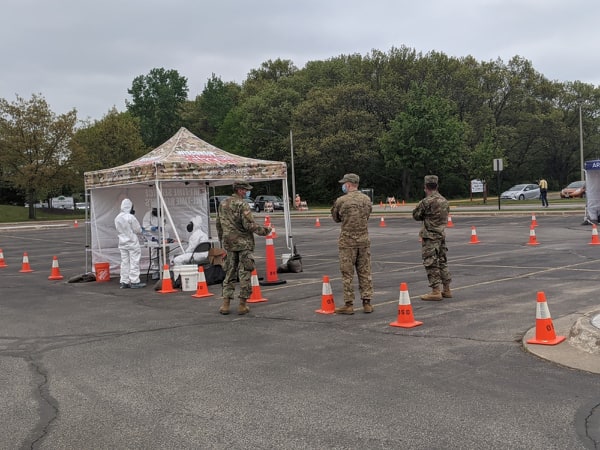Coronavirus
DHS official: Herd immunity may come this fall in Wisconsin

MADISON, Wis. (AP) — Wisconsin may not reach herd immunity from COVID-19 until fall if vaccination rates continue to trend downward, a key state health department leader says.
Department of Health Services Deputy Secretary Julie Willems Van Dijk said earlier this spring that 70% of Wisconsin’s population would need to be vaccinated to achieve herd immunity and the state could reach that benchmark by July.
But vaccination rates have slowed dramatically since then. The health department was seeing daily increases of 1% to 2% in the number of shots administered during the early days of the vaccine rollout in January, February and March, Van Dijk told The Associated Press in an interview this week.
Now the department is seeing a 1% increase every week, she said. At this rate it likely will be fall before the state reaches the 70% mark, she said. As of Thursday, 40% of the state’s eligible population had been fully vaccinated.
“If we keep at that pace, one percentage point a week, you know, in another, maybe not by July, maybe it’s more like September or October we’re going to hit that 70, 80%,” she said. “It’s just going to take longer.”
Van Dijk acknowledged that guidelines the U.S. Centers for Disease Control and Prevention issued earlier this month advising that vaccinated people can go unmasked in almost all outdoor and indoor settings could lead some people to think the worst of the pandemic is over and they don’t need to get shots or wear masks. She said those people are putting themselves and other unvaccinated people at risk of catching the disease.
“This is not over,” Van Dijk said. “If you are walking around unvaccinated without a mask, you are inviting risk to yourself and others you interact with . . . If you want a suit of armor against (COVID-19) we really know the vaccine does that.”
The deputy secretary added that she’s been surprised at how impatient the public has been with changing COVID-19 protocols. The coronavirus that causes COVID-19 had never been seen before 2019 and researchers and scientists have been learning about it on the fly, she said.
“What I underestimated was how impatient the public would be with emerging science,” she said. “People want answers. They want black and white answers, they want them now, they want them to be consistent and almost all of that is not possible in a novel virus pandemic because we don’t have the knowledge. We’re learning as we go. A lot of the time, people like me . . . are being accused of flip-flopping or not being consistent in our message and it really was because the message of two or three weeks ago no longer applied based on what we know.”
Follow Todd Richmond on Twitter at https://twitter.com/trichmond1

